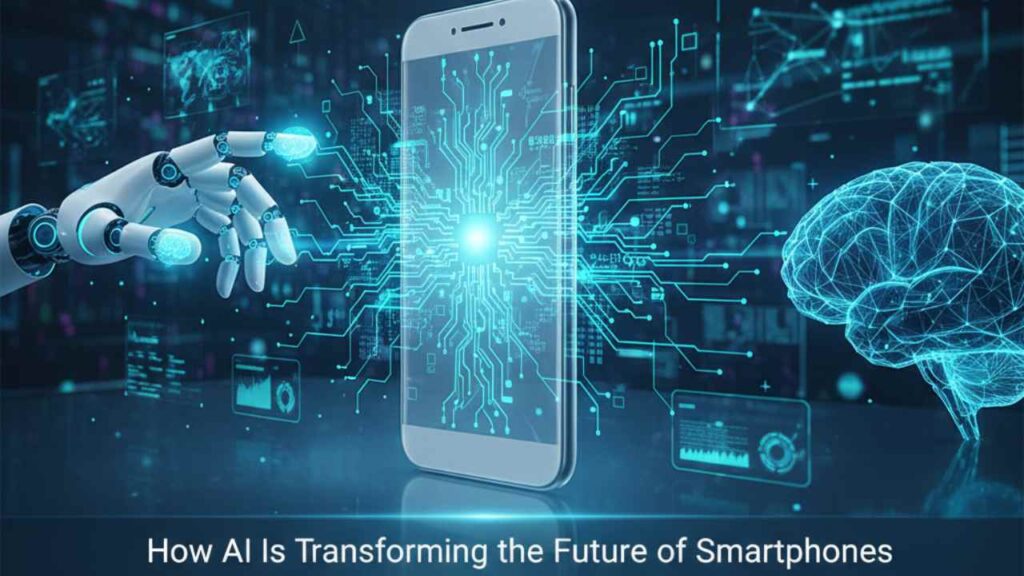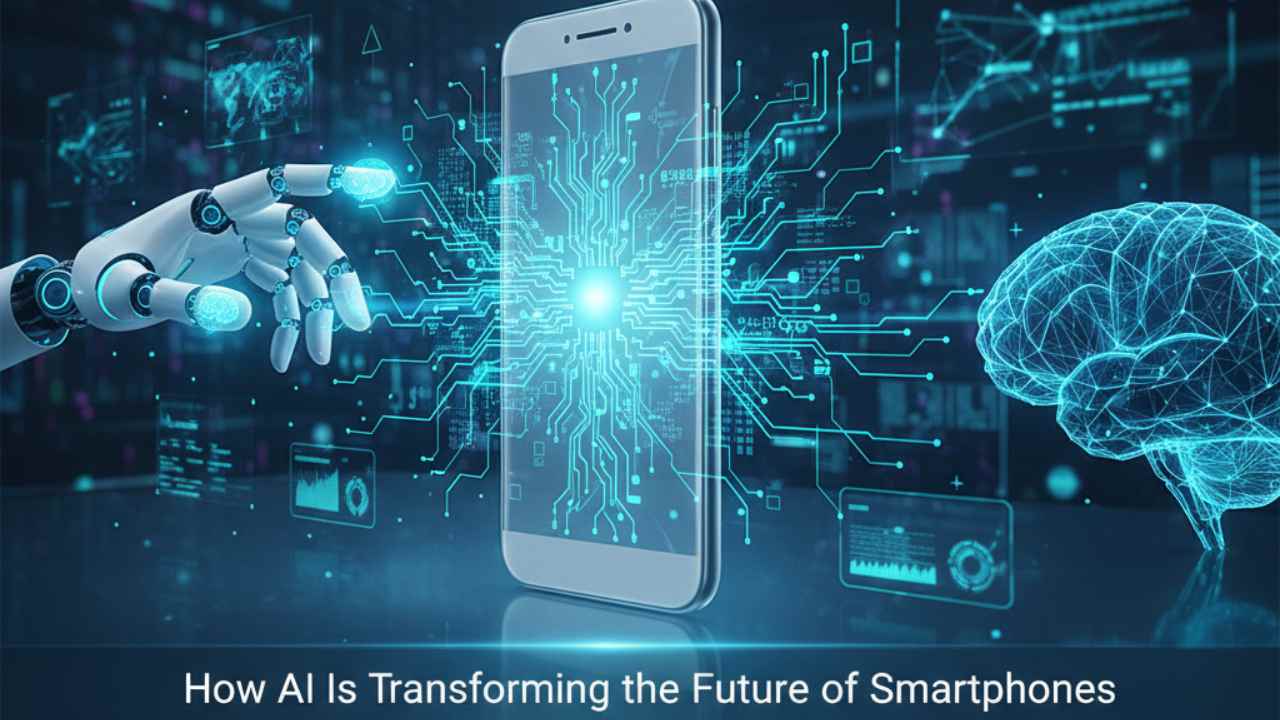Artificial Intelligence (AI) has moved far beyond being a buzzword in 2025 — it’s now the foundation of modern smartphone innovation. From intelligent cameras that understand emotions to processors that learn your habits, AI is shaping how smartphones think, adapt, and evolve.
With leading companies like Apple, Samsung, Google, Huawei, and Honor investing heavily in AI-driven experiences, the smartphone is no longer just a communication tool — it’s becoming an intelligent companion.
Let’s take a deep dive into how AI is transforming smartphones in 2025, what’s happening behind the screen, and where the future is heading.

1. Smarter Photography: The AI Revolution Behind Every Click
One of the most visible applications of AI in smartphones is camera intelligence. What once depended purely on megapixels now relies on machine learning algorithms that recognize patterns, scenes, and even emotions.
AI-powered cameras can:
- Detect up to 100+ scene types, automatically optimizing exposure, sharpness, and tone.
- Enhance details in low-light conditions using deep learning to merge multiple frames.
- Apply AI-based HDR for balanced highlights and shadows.
- Recognize subjects in real-time — pets, food, or landscapes — and adjust settings accordingly.
For example, Honor’s AI camera systems use real-time data analysis to detect and track moving subjects, while Google Pixel’s Tensor AI chip ensures ultra-fast photo processing with true-to-life colors.
| AI Camera Feature | What It Does | Example Brand/Model |
|---|---|---|
| Scene Detection | Adjusts settings automatically | Huawei P70 |
| Motion Tracking | Keeps subjects sharp and centered | Honor Magic6 |
| AI Night Mode | Enhances visibility in dark | Google Pixel 9 |
| AI Portrait Mode | Optimizes background blur & tones | iPhone 16 Pro |
Takeaway:
AI cameras now act like personal photographers — learning from user preferences, optimizing every shot, and even editing in real-time.
2. Personalized User Experience: When Smartphones Understand You
Modern smartphones no longer just respond — they anticipate. Using AI-driven behavioral learning, your phone studies daily patterns:
- Which apps you open in the morning.
- How long you use social media.
- When you prefer dark mode or power-saving settings.
AI then optimizes battery, app loading times, and even recommendations to suit your habits. For instance, if you regularly open YouTube after dinner, your smartphone might pre-load the app for faster access.
AI-powered launchers like Samsung One UI, Google Pixel Launcher, and Honor MagicOS now integrate predictive shortcuts, adaptive brightness, and content curation to make the experience seamless and highly personalized.
In short: AI turns your smartphone into a digital twin that evolves with you.
3. AI Voice Assistants: Beyond Commands to Conversations
Voice assistants have evolved from simple command followers to intelligent digital companions. Thanks to Natural Language Processing (NLP) and contextual AI, assistants like Google Assistant, Siri, Alexa, and Honor’s YOYO AI can now understand emotions, context, and tone.
AI voice systems in 2025 can:
- Hold multi-turn conversations (understand context over time).
- Detect emotional cues in your voice.
- Integrate across apps and devices (IoT connectivity).
- Translate languages in real-time.
Example: You can say, “Remind me to call Mom when I reach home,” and your phone automatically sets a location-based reminder.
With the rise of Generative AI, assistants can even summarize long emails, suggest replies, or narrate news headlines. This is no longer voice assistance — it’s voice collaboration.
4. Security & Privacy: AI as the Guardian of Your Digital Life
AI is reshaping mobile security by introducing adaptive authentication — systems that continuously analyze user behavior to detect anomalies.
Here’s how AI protects users in 2025:
- Facial Recognition 3.0: Detects 3D contours, lighting differences, and even mask use.
- AI-powered Biometrics: Combine fingerprint, eye, and behavioral data for stronger verification.
- Threat Detection: AI algorithms flag unusual login attempts or malware activity.
- Data Anonymization: AI scrambles identifiable data during processing for enhanced privacy.
Huawei and Apple have pioneered on-device AI security chips, ensuring private data doesn’t leave the phone for processing.
Result: You get faster, safer access — without compromising privacy.
5. Power Efficiency and Performance Optimization: AI at the Core
AI doesn’t just make phones smarter — it makes them last longer and run smoother. Using deep learning, smartphones now monitor power usage, detect app priorities, and adjust system resources accordingly.
Here’s how it works:
- AI predicts which apps you’ll open next and preloads them.
- It pauses unused background apps automatically.
- Machine learning algorithms reduce CPU strain during multitasking.
- AI battery management extends standby time by up to 25–30%.
For example, Honor’s MagicOS, Samsung’s AI PowerBoost, and Apple’s A18 Bionic Neural Engine all use real-time optimization to deliver peak performance with reduced heat.
| AI Function | Impact on Performance |
|---|---|
| Adaptive Battery | Up to 30% more screen time |
| Smart Resource Allocation | Faster multitasking |
| Thermal Optimization | Reduces overheating |
| Background Process Control | Saves energy & improves stability |
Conclusion:
AI has become the invisible engineer ensuring your smartphone performs efficiently without manual tuning.
Also Read: Google Cloud CEO Thomas Kurian Says: “AI Will Amplify Human Potential, Not Replace Tech Jobs”
The Bigger Picture: AI Smartphones as Digital Companions
The fusion of AI with smartphones goes beyond technical improvements — it’s redefining human-technology interaction.
AI-driven mobile ecosystems in 2025 are built to learn, adapt, and evolve with every tap, swipe, and voice command.
From creating photos that mirror artistic instincts to predicting what you need before you ask — AI is pushing smartphones toward true cognitive intelligence.
And as 6G and edge computing evolve, expect future smartphones to process even complex AI models entirely on-device, leading to real-time responsiveness and stronger privacy.
Also Read: OnePlus 15 Launch in India: Price, Specs, and Camera Features You Need to Know
FAQs: AI in Smartphones (2025 Edition)
1. How is AI improving mobile photography?
AI analyzes lighting, subject, and motion to optimize camera settings automatically for professional-looking results.
2. Can AI really enhance battery performance?
Yes. AI tracks usage patterns, detects idle apps, and intelligently distributes power to maximize battery life.
3. Is AI safe when it comes to personal data?
Most brands now use on-device AI processing, ensuring your private data never leaves your smartphone.
4. Which brands are leading in AI smartphone innovation?
Brands like Honor, Huawei, Samsung, Apple, and Google are heavily investing in AI-powered processors and ecosystems.
5. What’s next for AI in mobile technology?
Expect fully autonomous devices capable of emotional intelligence, on-device generative AI, and personalized digital twin assistants.
Related Articles You Might Like:
- Meta Layoffs 2025: Why Meta Cut 600 Jobs from Its AI Division and What It Means for the Future of Superintelligence
- Honor Robot Phone: A Futuristic Leap in Smartphone Camera Technology
- Apple MacBook Pro 14-inch with M5 Chip Launched: Price, Features, and AI Power Unleashed
Disclaimer:
This article is intended for informational and educational purposes. Specifications and technologies mentioned may vary based on regional releases or official updates. Readers are advised to verify product details from official sources before making purchase decisions.
Sources:
Hi, I’m Simran Shah, a graphic designer and digital content creator with 4+ years of experience. I run two YouTube channels focused on AI, tech, mobiles, and automobiles — topics I’m truly passionate about.
My love for deep research started when I used to spend hours finding the best gadgets or information before making any decision. That’s when I realized I could help others save time by sharing my findings — both through well-researched content and visually compelling designs.
Now, through blogs, videos, and graphics, I do the research so you don’t have to — using tools like ChatGPT to make content clear, helpful, and time-saving.

